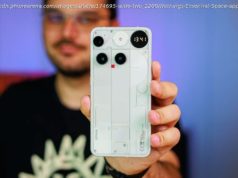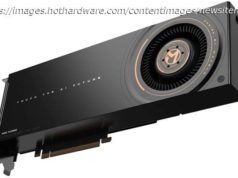Apple’s new iPhone XS smartphones have bigger screens and more powerful processors than their predecessors. Here’s how they stack up against Samsung’s S9 lineup.
Apple’s newest flagship phones, the iPhone XS and XS Max, are Apple’s most powerful and advanced smartphones yet, and are nearly identical save for their screen sizes and resolutions. Naturally, they beg to be compared not just to each other, but to the Samsung Galaxy S9 and Galaxy S9+, which are also very similar phones with two different screen sizes.
Here’s how the Apple iPhone XS and XS Max stack up against the Samsung Galaxy S9 and S9+, at least on paper; we won’t have a final verdict until we get the new iPhones into PC Labs and put them through their paces ourselves.
Samsung has the clear edge, but that might change when it inevitably announces the Galaxy S10/SX. The iPhone XS starts at $999, and the XS Max pushes it even further with a $1,099 price floor. That’s for the 64GB versions; more expensive 256GB and 512GB models will also be available. Meanwhile, the Galaxy S9 and S9+ are priced at a much more reasonable $720 and $840, respectively, putting them more in line with the upcoming « entry-level » iPhone XR.
In terms of size and weight, the iPhone XS is virtually indistinguishable from the Galaxy S9, and the iPhone XS Max is largely identical to the Galaxy S9+.
The XS is slightly shorter (5.65 to 5.8 inches) and narrower (2.79 to 2.9 inches) than the S9. The XS Max, meanwhile, is slightly wider (3.05 to 2.9 inches) and a hair thinner (0.30 to 0.33 inches) than the S9+.
Both iPhones are heavier than their Samsung counterparts, with the XS weighing about half an ounce more than the S9 at 6.24 ounces and the XS Max weighing just shy of an ounce more than the S9+ at 7.34 ounces.
Apple is stepping up its screen game with a bigger Super Retina OLED displays on the iPhone XS Max, though the iPhone XS has the same 5.8-inch, 458ppi screen dimensions as the iPhone X. The XS Max sports a whopping 6.5-inch 2,688-by-1,242 OLED screen, eclipsing even the S9+ in size by nearly a third of an inch.
Apple continues to lag behind Samsung in resolution, though; the Galaxy S9 and S9+ have 2,960-by-1,440 screens for much sharper 529ppi (S9+) and 570ppi (S9) images. Both iPhone XS versions have 458ppi, which is still nothing to sneeze at on a phone.
Beyond size and resolution considerations, the iPhone XS and XS Max screens have some impressive upgrades for picture quality, according to Apple. Their displays boast a 60 percent higher dynamic range of color over the iPhone X’s screen, and support high dynamic range ( HDR) in both Dolby Vision and HDR10. The S9 and S9+ screens also support HDR10, but not Dolby Vision.
Both the iPhone XS and the XS Max have the same dual 12MP rear-facing cameras with f/1.8 wide-angle and f/2.4 telephoto lenses, and the same 7MP front-facing camera with an f/2.2 aperture lens. And those cameras appear to be identical to the cameras on the iPhone X, though Apple claims the XS and XS Max are capable of some impressive image-processing tricks.
The S9+ also has a dual 12MP rear-facing camera, which can create very nice photos with bokeh, and adds some power for augmented reality apps. The S9 lags behind the others with a single 12MP camera, so it can’t do as much with visual depth. The S9+ might be the overall winner on paper here, since its wide-angle lens can reach f/1.5 and its front-facing camera lens is a higher 8MP resolution with a wider f/1.8 aperture compared with the iPhones. Again, we’ll have to test them in the lab to see which shoots the best.
According to Apple, the iPhone XS can last up to 30 minutes longer, and the iPhone XS Max can last up to an hour and 30 minutes longer than the iPhone X on a full charge. Of course, that depends on what you’re doing with your iPhones. For internet use, Apple estimates 12- and 13-hour battery lives, respectively. For audio playback, Apple says 60 and 65 hours. We’ll do your own tests soon, but they’ll be hard-pressed to beat the S9 and S9+, both of which lasted over 10 hours streaming video over LTE at maximum brightness.
This gets tricky, because while Apple loves to say its processors are the fastest and compare them with previous iPhone CPUs, it’s cagey when it comes to clock speed and hard numbers.
Both the iPhone XS and XS Max have Apple’s new A12 Bionic chip, a significant upgrade from the iPhone X’s A11 system-on-a-chip (SoC). The Galaxy S9+ inched ahead of the iPhone X in a few benchmarks, but the A11 outpaced its Snapdragon 845 in just as many categories. It seems safe to assume that the iPhone XS phones with their even faster processors will turn that performance tie into an outright gap.
All the phones start at 64GB of storage. The iPhone XS and XS Max can both ramp up storage dramatically, with 256GB and 512GB versions. The Galaxy S9 and S9+ only come in 64GB, 128GB, and 256GB versions, but the Samsung phones at least have microSD card slots so you can add your own storage.
Samsung keeps a strong grip on screen superiority with its markedly higher-resolution screens, but Apple might be pushing ahead in power with the A12 Bionic chip. The iPhone XS and Galaxy S9 families are technically impressive devices, but Samsung’s flagships are six months old while the new iPhones were just announced; that gap of mere months is becoming apparent based on the numbers.
Of course, Samsung still has the edge over Apple in pricing by a few hundred dollars, with only the LCD-equipped, much lower-resolution iPhone XR coming close to the S9 and S9+’s price tags.






